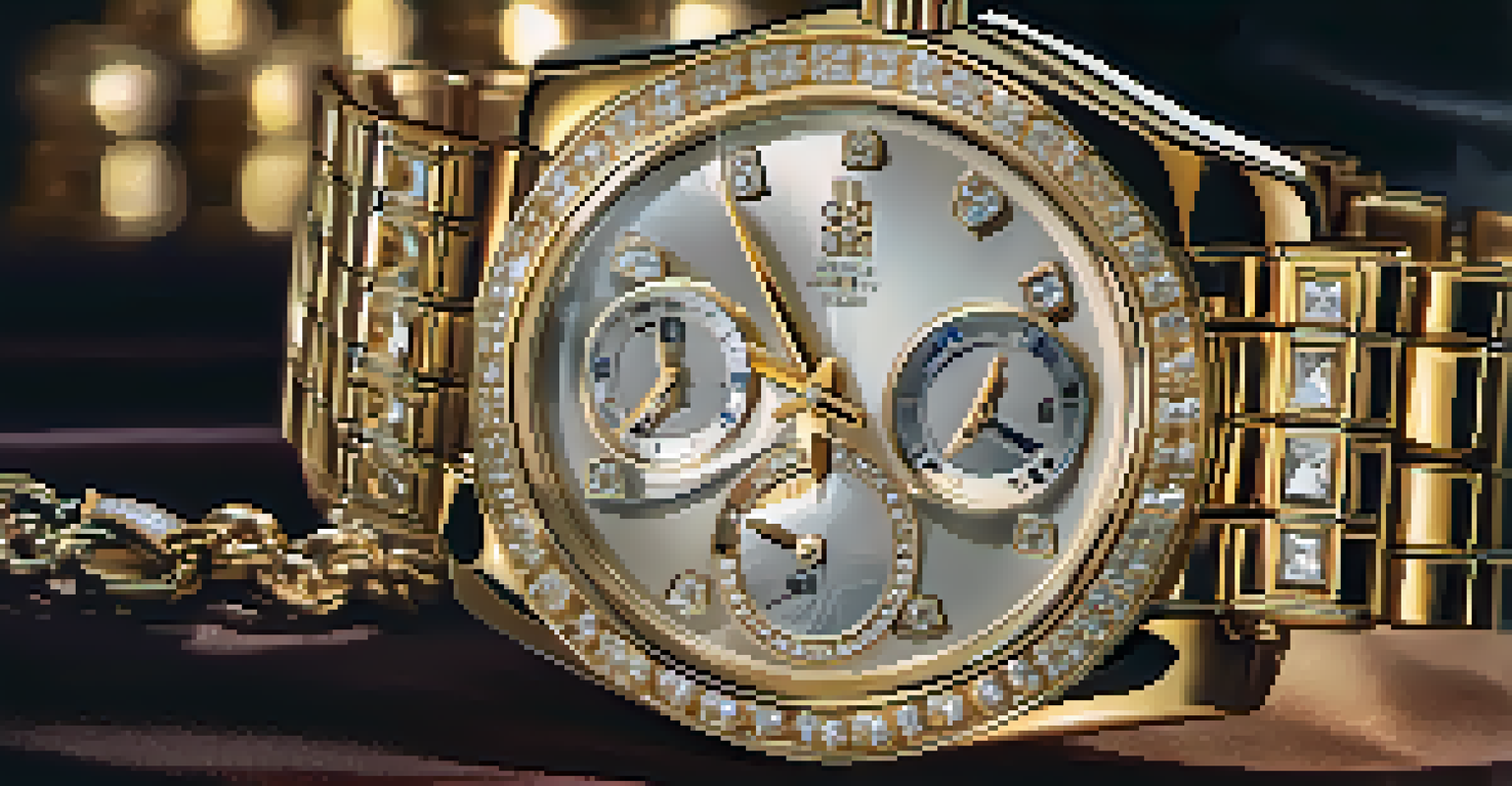Investing in Luxury: How to Make Your Money Work for You

Understanding Luxury Investments: A Primer
Investing in luxury is about more than just opulence; it’s a strategic way to grow your wealth. Luxury assets can include art, high-end real estate, vintage cars, and exclusive watches. These investments often appreciate over time, offering a hedge against inflation and market volatility.
The greatest investment you can make is in yourself. The more you learn, the more you'll earn.
Unlike traditional stocks or bonds, luxury items have intrinsic value that can remain stable or even increase, depending on demand. For example, a classic painting by a renowned artist can fetch millions at auction, showcasing the potential returns of luxury investments. Understanding this unique market is the first step toward capitalizing on its opportunities.
Moreover, luxury investments can add a personal touch to your portfolio. They allow you to enjoy the benefits of your investment while it appreciates in value. This blend of enjoyment and financial gain makes luxury investing an attractive option for many.
Identifying High-Value Luxury Assets
Not all luxury items are created equal; some appreciate more than others. When looking for high-value luxury assets, consider factors like brand reputation, rarity, and condition. For instance, limited edition items from prestigious brands often command higher prices over time.

Art is a prime example, where the market can fluctuate based on the artist's reputation and market trends. A piece by a rising artist can be a gamble, but it may pay off handsomely if their work becomes sought after. Researching market trends and historical data is essential when evaluating potential luxury investments.
Luxury Investments Grow Wealth
Investing in luxury assets like art and real estate can provide significant financial growth and a hedge against market volatility.
Additionally, engaging with experts in the field can provide invaluable insights. Whether it's a seasoned art dealer or a luxury car auctioneer, their expertise can help you identify which assets are likely to hold or increase their value.
The Importance of Authenticity and Provenance
When investing in luxury items, authenticity is non-negotiable. Counterfeit goods can flood the market, making it crucial to ensure that any piece you purchase is genuine. This is especially true for high-end watches, art, and collectibles, where fakes can significantly diminish value.
Investing in art is a way to invest in culture. It provides not only financial returns but also emotional satisfaction.
Provenance, or the history of ownership, also plays a vital role in establishing an item’s value. Items with a well-documented history can fetch higher prices, as they come with a story that enhances their appeal. For example, a vintage handbag owned by a celebrity may be worth significantly more than an identical one without that history.
Investing the time to authenticate items and verify their provenance can save you from costly mistakes in the long run. It not only protects your investment but can also enhance its resale value, making it a key factor in luxury investing.
Market Trends: Staying Ahead in Luxury Investing
Just like any investment, understanding market trends is essential in luxury investing. The luxury market can be influenced by cultural shifts, economic changes, and emerging trends. For instance, the rise in sustainable luxury has changed how consumers view high-end products, making eco-friendly luxury items more desirable.
Keeping an eye on auction results, sales reports, and industry news can provide insights into what’s trending. Websites and magazines dedicated to luxury lifestyle often discuss emerging trends and popular items, equipping you with the knowledge to make informed decisions.
Authenticity is Crucial
Ensuring the authenticity and provenance of luxury items is essential to protect their value and enhance resale potential.
Participating in forums and attending luxury shows can also offer a glimpse into future trends. Engaging with other enthusiasts can provide you with insights and strategies to stay ahead in this dynamic market.
Diversifying Your Luxury Investment Portfolio
Diversification is a fundamental principle of investing, and luxury assets are no exception. By spreading your investments across various types of luxury items, you can mitigate risks associated with market fluctuations. For example, investing in both fine art and luxury watches can balance your portfolio's performance.
Consider putting a portion of your budget into different categories such as real estate, collectibles, and vehicles. Each category behaves differently in the market, which can provide stability to your overall investment strategy. This way, if one asset class declines, your other investments may still perform well.
Moreover, diversification allows you to explore different passions and interests. If you’re an art lover, you might invest in both contemporary and classic pieces, while also looking into luxury fashion or vintage wines. This not only secures your financial future but also enriches your life with items you genuinely enjoy.
Maintaining Your Luxury Investments: Care and Upkeep
Once you’ve made your luxury investments, proper maintenance is crucial to preserving their value. Each type of asset requires specific care; for example, art needs to be displayed in climate-controlled environments, while luxury vehicles need regular servicing. Neglecting these aspects can lead to depreciation, diminishing your investment’s worth.
Additionally, documenting the condition of your assets can be beneficial for future resale. Keeping up with maintenance records, receipts, and any appraisals can help demonstrate the value of your investment. This can make a significant difference when it comes time to sell.
Diversify for Stability
Diversifying your luxury investment portfolio across different asset types can mitigate risks and provide a balanced approach to wealth management.
Investing in insurance for your luxury items is also a wise move. It protects you from loss due to theft, damage, or unforeseen events, ensuring your investment remains secure. Taking these steps will not only safeguard your assets but also enhance their long-term value.
The Exit Strategy: Knowing When to Sell
Knowing when to sell your luxury investments is just as important as knowing when to buy. The luxury market can be unpredictable, and timing your exit can maximize your returns. Factors such as market demand, personal financial goals, and changes in the condition of the asset should all play a role in your decision.
For instance, if you notice a surge in interest for a particular artist or collectible, it might be the right moment to sell. Keeping abreast of market trends and auction results can help you identify lucrative selling opportunities. Additionally, personal circumstances may change, prompting a need to liquidate certain assets.

Ultimately, having a clear exit strategy allows you to make informed decisions and avoid emotional selling. By setting specific criteria for when to sell, you can navigate the market more effectively and ensure that your investments yield the best possible returns.